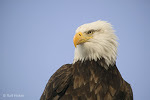Exchange-traded funds (ETFs) are a type of financial instrument whose unique advantages over mutual funds/ unit trusts have caught the eye of many an investor. If you find the tasks of analyzing and picking stocks a little daunting, ETFs may be right for you. In this entry I will attempt to define ETFs, highlight their advantages, and list some of the most popular ETFs available to investors.
What Is an ETF?
Think of an exchange-traded fund as a mutual fund that trades like a stock. Just like an index fund, an ETF represents a basket of stocks that reflect an index such as the S&P 500. An ETF, however, isn't a mutual fund; it trades just like any other company on a stock exchange. Unlike a mutual fund that has its net-asset value (NAV) calculated at the end of each trading day, an ETF's price changes throughout the day, fluctuating with supply and demand. It is important to remember that while ETFs attempt to replicate the return on indexes, there is no guarantee that they will do so exactly. It is not uncommon to see a 1% or more difference between the actual index's year-end return and that of an ETF.
By owning an ETF, you get the diversification of an index fund plus the flexibility of a stock. Because ETFs trade like stocks, you can short sell them, buy them on margin and purchase as little as one share. Another advantage is that the expense ratios of most ETFs are lower than that of the average mutual fund. When buying and selling ETFs, you pay your broker the same commission that you'd pay on any regular trade.
Varieties of ETFs
The first exchange-traded fund was the S&P 500 index fund (nicknamed spiders because of their SPDR ticker symbol), which began trading on the American Stock Exchange (AMEX) in 1993. Today - tracking a wide variety of sector-specific, country-specific and broad-market indexes - there are hundreds of ETFs trading on the open market. You can pretty much find an ETF for just about any kind of sector of the market.
For example, if you were interested in the healthcare sector, perhaps Vanguard’s Health Care Viper (ticker VHT) would be worth looking into. Does the Austrian market peak your interest? Then take a look at the ishares MSCI Austrian Index fund (ticker EWO). Or if you’d like exposure to the internet infrastructure sector, then maybe Merrill Lynch’s HOLDRs (ticker IIH0) might be for you.
Some of the more popular ETFs have nicknames like cubes (QQQQ), vipers (VIPERs) and diamonds (DIAs). All ETFs are passively managed, meaning investors save big on management fees. Below you will find a closer look at some of the more popular ETFs:
Nasdaq-100 Index Tracking Stock (QQQQ)
This ETF represents the Nasdaq-100 Index, which consists of the 100 largest and most actively traded non-financial stocks on the Nasdaq, QQQQ offers broad exposure to the tech sector. Because it curbs the risk that comes with investing in individual stocks, the QQQQ is a great way to invest in the long-term prospects of the technology industry. The diversification it offers can be a huge advantage when there’s volatility in the markets. If a tech company falls short of projected earnings, it will likely be hit hard. Between 2000 and 2004, QQQQ was by far the most heavily traded index fund.
SPDRs
Usually referred to as spiders, these investment instruments bundle the benchmark S&P 500 and give you ownership in the index. Imagine the trouble and expenses involved in trying to buy all 500 stocks in the S&P 500! SPDRs allow individual investors to own the index's stocks in a cost-effective manner. Another nice feature of SPDRs is that they divide various sectors of the S&P 500 stocks and sell them as separate ETFs, there are literally dozens of these types of ETFs. The "technology select sector index", for example, contains over 85 stocks covering products developed by companies such as defense manufacturers, telecommunications equipment, microcomputer components, and integrated computer circuits. This ETF trades under the symbol XLK on the AMEX.
iShares
iShares is Barclay's (Barclay’s Global Investors “BGI”) brand of ETFs. In 2004 there were approximately 120 iShares trading on more than 10 different stock exchanges. Barclay has put out a number of technology-oriented iShares that follow Goldman Sachs's technology indexes. All of these particular ETFs trade on the AMEX.
Vipers
Just like iShares are Barclay’s brand of ETFs, VIPERs are Vanguard’s brand of the financial instrument. Vipers, or Vanguard Index Participation Receipts, are structured as share classes of open-end funds. Vanguard also offers dozens upon dozens of ETFs for many different areas of the market including the financial, healthcare and utilities sectors.
DIAMONDs
These ETF shares, Diamonds Trust Series I, track the Dow Jones Industrial Average. The fund is structured as a unit investment trust. The ticker symbol of the Dow Diamonds is DIA, and it trades on the AMEX.
Conclusion
A great reason to consider ETFs is that they simplify index and sector investing in a way that is easy to understand. If you feel a turnaround is around the corner, go long. If, however, you think ominous clouds will be over the market for some time, you have the option of going short. The combination of the instant diversification, low cost and the flexibility that ETFs offer, makes these instruments one of the most useful innovations and attractive pieces of financial engineering to date.
King of the Birds, Lord of the Skies

Gather ye rose buds while ye may, old time is still a flying;
and this same rose that you see today, tomorrow will be dying.
CarpeDiem: Seize the Day!
- Dead Poets Society
Saturday, March 1, 2008
Subscribe to:
Comments (Atom)
